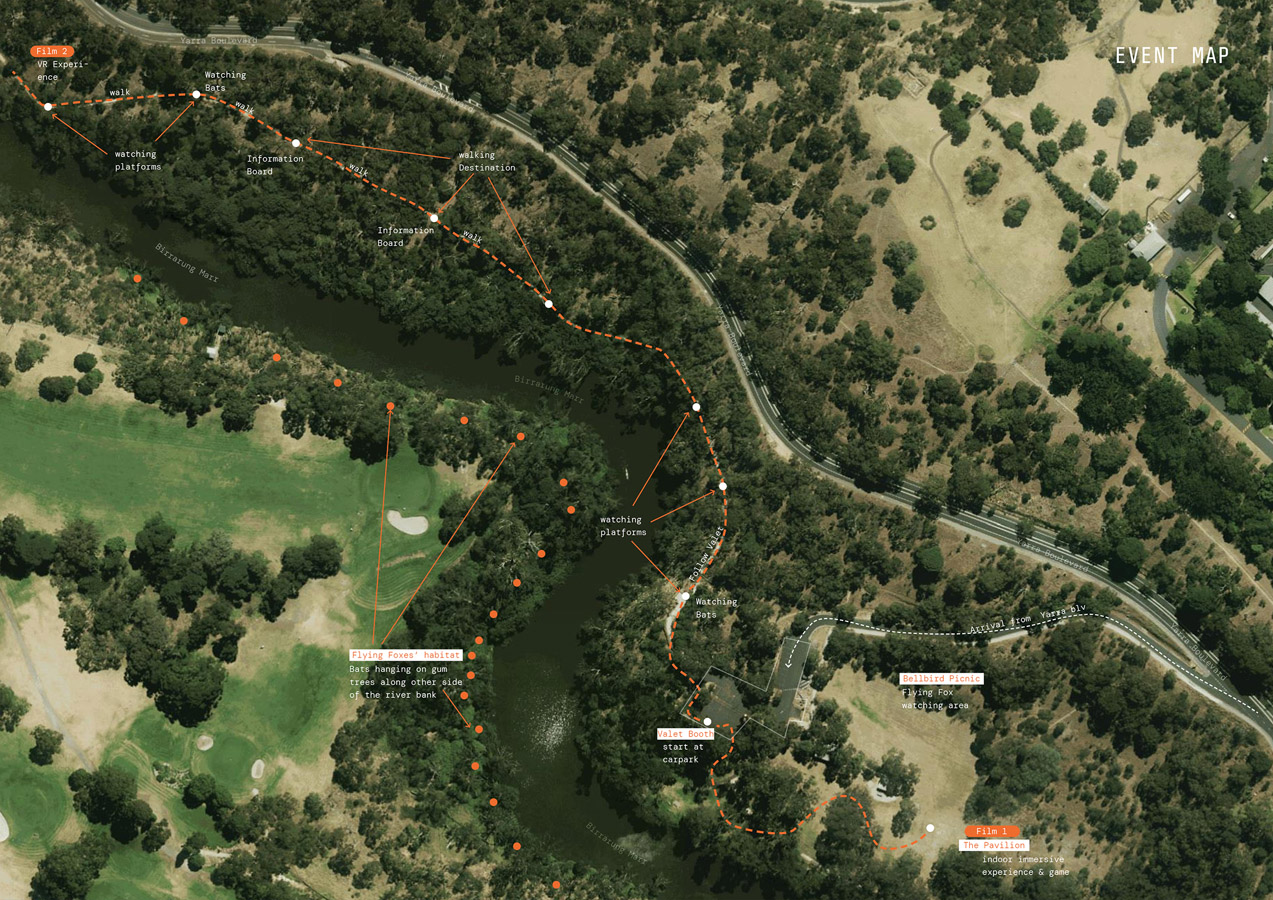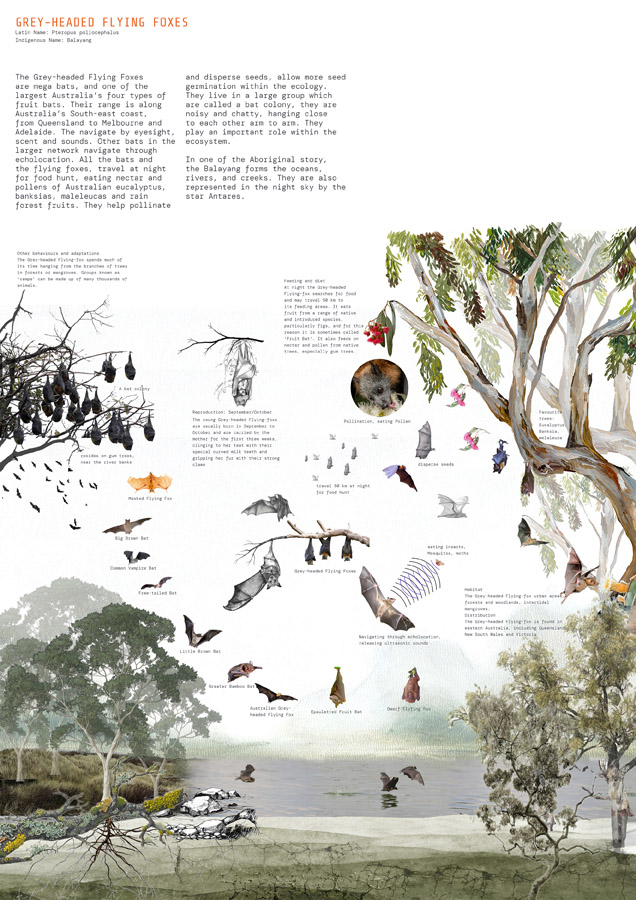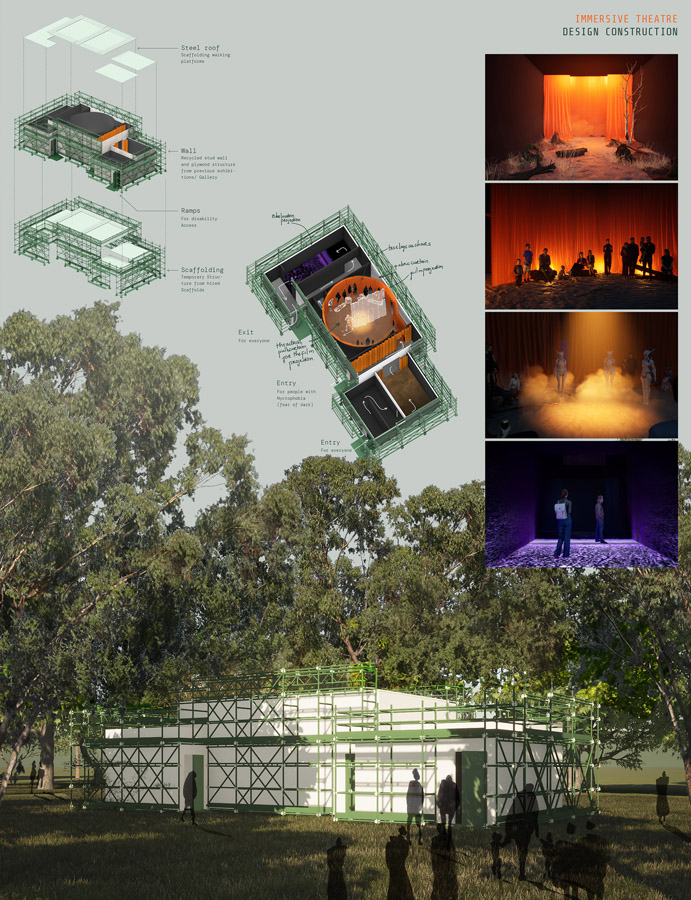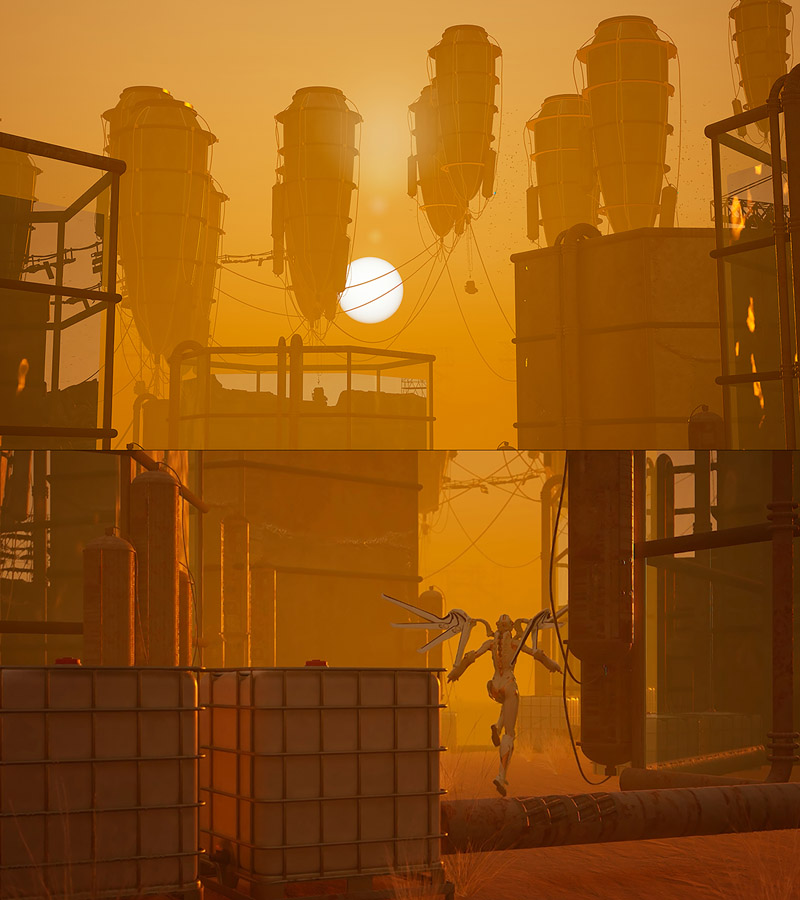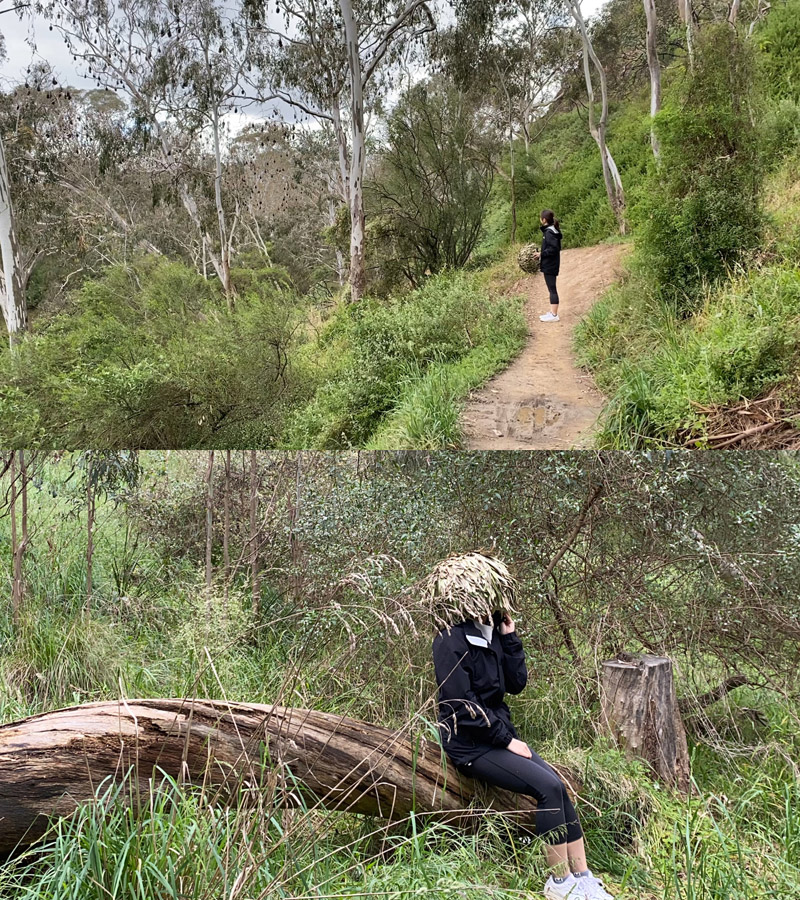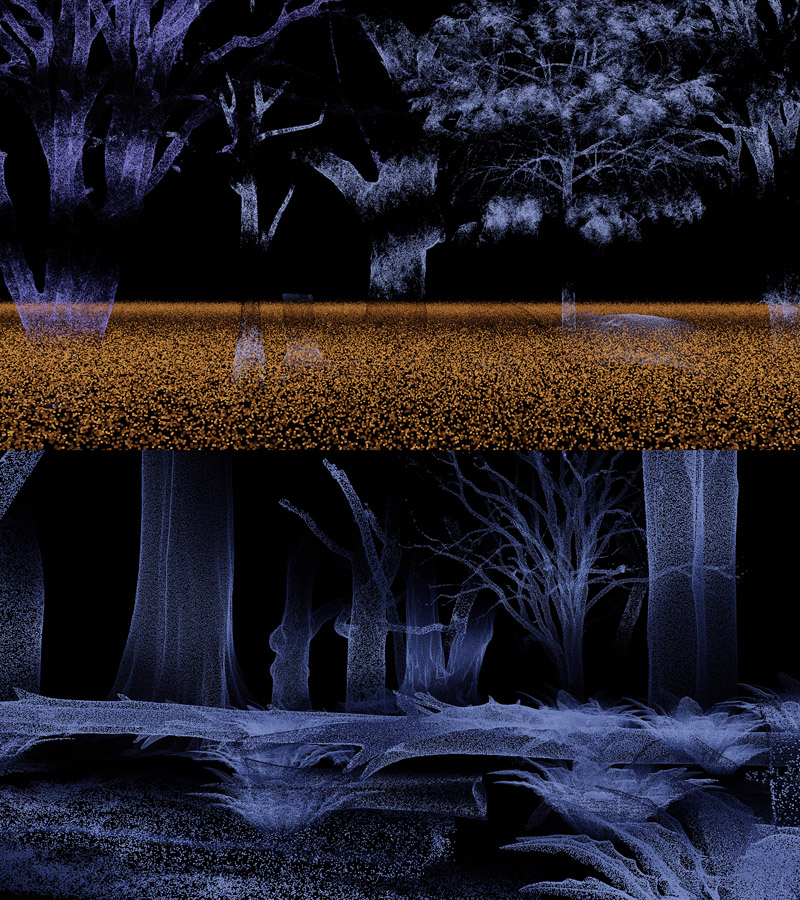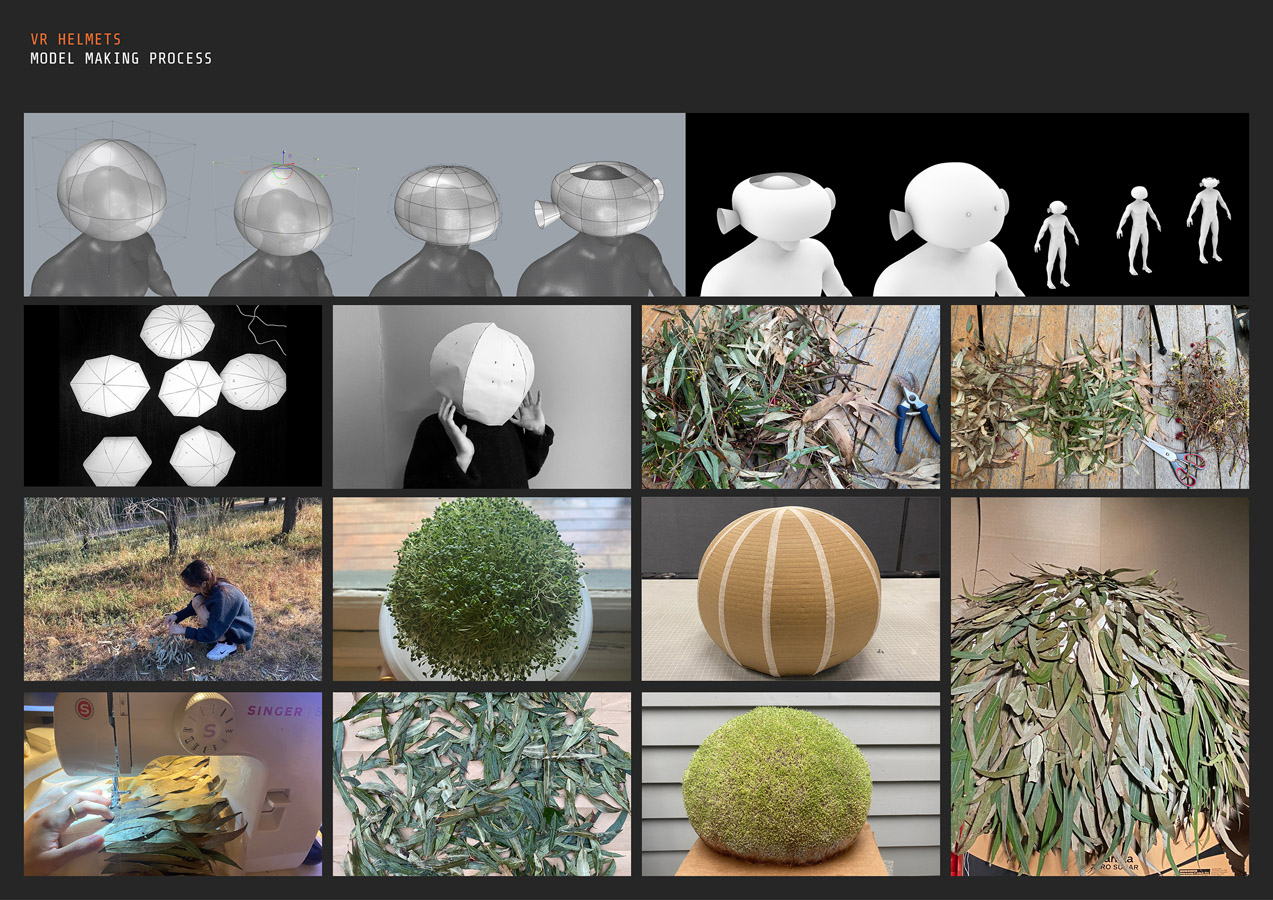The design process was extensive as the project narrative spans multiple platforms. It began with attentive walks in the Otway Forest, Victoria to observe the local habitat and research endangered species. These walks and research led me to further walks at Yarra Bend Park to observe the habitat of flying fox colony that roosts in River Red Gums and Yellow Box trees along the Birrarung (Yarra) riverbank. Seeing the bats emerge from daytime sleep and their noisy chatter influenced decisions to choose the event’s time and location situated near the bats in the late afternoon.
Using the Yarra Bend bat colony as this project’s key species, I developed a speculative futuristic film of a city devoid of trees. The process involved iterative sketches and narratives, 3D modelling and animation. The decision to select a female bat/human as a central protagonist was based on the desire to challenge conventional approaches, which often underrepresent women futurists in films and games.
LiDAR scanning was discovered as an effective method to digitise the existing bat habitat. Using this technology, 3D scans of trees were taken from both the Otway and Yarra Bend Park. These scans were converted into point clouds and particle systems and animated using game engine software. The animation process was informed by scientific research on echolocation, a navigation technique used by many bat species
The pavilion’s forms, methods of construction and materials selection were based on the the film’s narrative.
Prototypes of VR helmets were developed through iterative form testing and materials selection. The helmet housing the VR headset was made from a cardboard armature and cotton fabric, sewn with fallen gum leaves collected after rain near the bats to simulate eucalyptus smells. The chia moss grown on another helmet represents the furry texture of bat hair without using synthetic fabrics.

